Key in a search term below to search our website.
Key in a search term below to search our website.
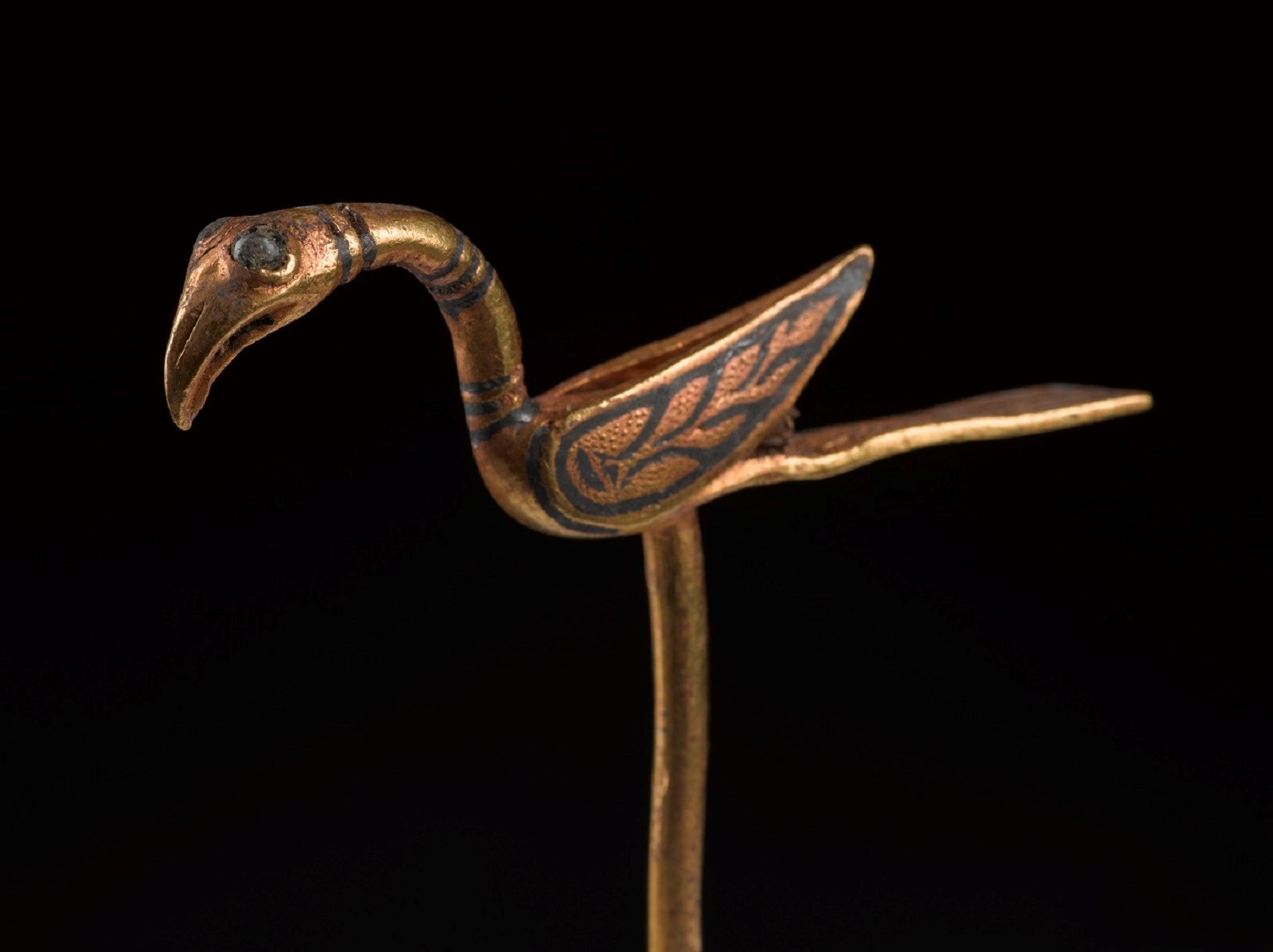
The Galloway Hoard is the richest collection of rare and unique Viking-age objects ever found in Britain or Ireland.
Buried around AD900, the Galloway Hoard brings together a stunning variety of materials and treasures from Ireland, the Anglo-Saxon kingdoms and as far away as Asia. The Hoard transports us back to a critical moment in history: the formation of the political entities we now know as Scotland, England and Ireland, in a time of viking raids.
Where was the Galloway Hoard found? What does it contain? Why is it special? And what is a 'hoard', anyway? Find out in this video introduction to the Galloway Hoard.
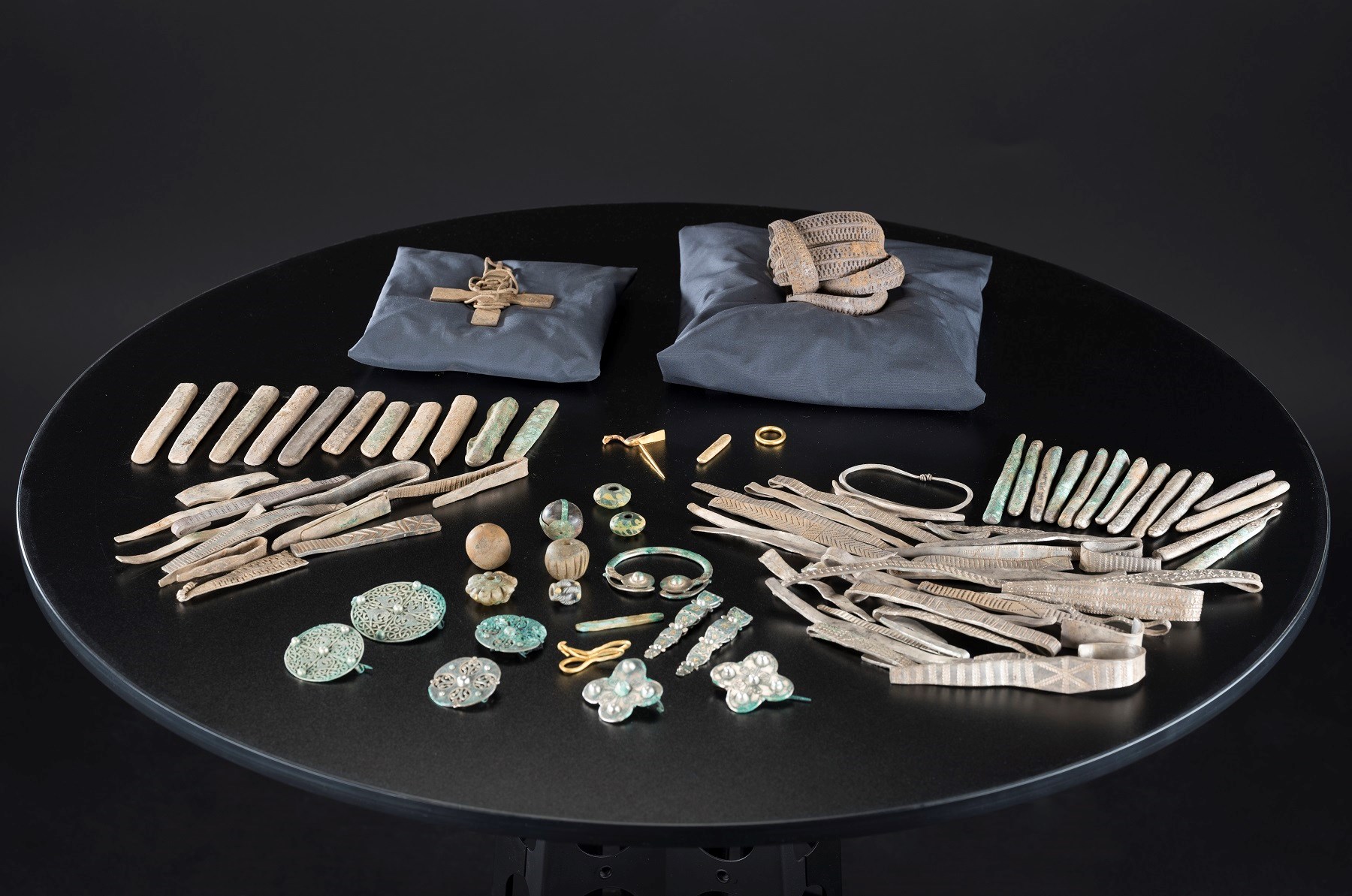
The restored contents of the Galloway Hoard laid out after more than 1,000 years in the earth
“Nothing like this has ever been found in Scotland . . . research so far is pointing to a new understanding of Scotland in the international context of the earliest Viking Age.- Dr Martin Goldberg, Principal Curator of Medieval Archaeology and History
One of the most important UK archaeological finds of the century, this incredible discovery comprises more than 100 objects, some of which are incredibly rare or unique.
Alongside over five kilograms of silver bullion, composed of arm-rings and ingots, the Hoard includes the largest and most varied collection of Viking-age gold objects known from Britain and Ireland and an unparalleled range of rare materials and unusual objects. These include: a silver pendant cross; a unique gold bird-shaped pin; a decorated silver-gilt lidded vessel; a large collection of Anglo-Saxon metalwork with two examples of an entirely new type of Anglo-Saxon cross-shaped brooch and unique multi-hinged straps; three golden jewels often referred to as 'aestels', in a silken-cord bundle; and a gold-mounted rock-crystal flask or jar contained in a silk-lined pouch.
The Galloway Hoard was discovered by a metal-detectorist in 2014 on what is now Church of Scotland land at Balmaghie in Kirkcudbrightshire. The Hoard was allocated to National Museums Scotland in 2017 and a successful fundraising campaign supported by the National Heritage Memorial Fund and Artfund saved the Hoard for the nation.
An exhibition entitled The Galloway Hoard: Viking Age Treasure displayed key items from the Hoard at the National Museum of Scotland from 29 May to 12 September 2021. The exhibition is now on tour, first to Kirkcudbright Galleries from 9 October 2021 to 10 July 2022 and then on to Aberdeen Art Gallery from 30 July to 23 October 2022 thanks to support from the Scottish Government.

This map shows the Galloway region in the wider context of the Irish Sea. Yellow squares mark Viking-age hoard finds. Map prepared by Dr Jane Kershaw, based on her data and data supplied by John Sheehan.
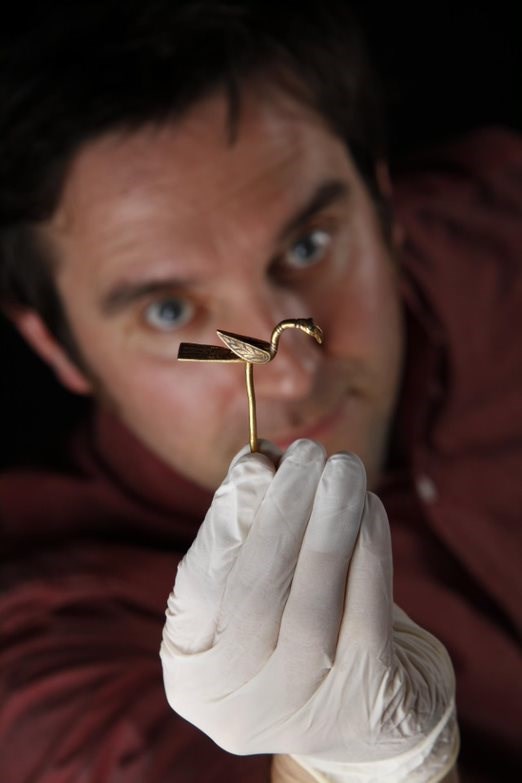 Dr Martin Goldberg, Principal Curator, Medieval Archaeology & History.
Dr Martin Goldberg, Principal Curator, Medieval Archaeology & History.
The Viking Age is well-known for silver hoards. Other finds from around Britain or Ireland have been exceptional for a single class of object—for example, silver brooches or arm-rings. But the Galloway Hoard brings together a stunning variety of materials in one discovery, as well as objects which have never before been discovered in a hoard of this age.
Incredibly, wool, linen, silk, leather, animal gut and wooden fragments have also survived, providing an extremely rare opportunity to research and reveal new aspects of the Viking Age.
The most remarkable aspect of the Galloway Hoard is the small, decorated, gilt-silver vessel and its contents. Two similar vessels are known from other Viking-age hoards in the UK, but this example stands out as completely different because it is wrapped in textile and is the only one with a surviving lid. The lid created a sealed environment for the remarkable preservation conditions within. Everything within this vessel was precious. Each object was valued for different reasons based on where it came from, how old it was, and who had owned it previously. This uniquely composed collection would have been priceless to the person or people who brought it all together.
Many questions remain: Who did the objects in the Hoard belong to? Where did they come from? How old are they? Why were they buried? National Museums Scotland has been awarded a grant by the Arts and Humanities Research Council to conduct a £1 million research project into the Hoard that will aim to uncover the answers. The three-year research project, entitled 'Unwrapping the Galloway Hoard', will be carried out in partnership with the University of Glasgow.
“We like to think of objects as having lives . . . Our research will trace the stories of the objects back to when and where they were made, as well as why they were buried at that time and in that place.- Dr Martin Goldberg, Principal Curator of Medieval Archaeology and History
The Galloway Hoard contains an extraordinary range of objects in terms of style, origins, and meanings. Below is a small selection of the Hoard's contents, each providing a unique insight into the wider world of the Viking Age.
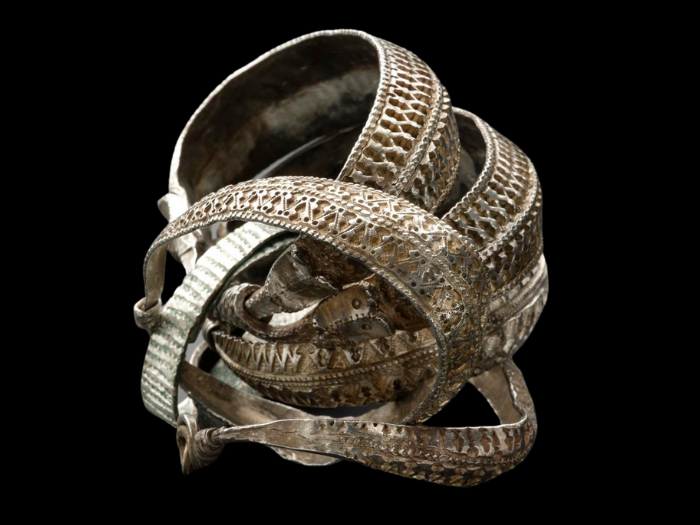
In the silver bullion there are clues to four former owners of the Hoard through runic inscriptions and four distinct groups of arm-rings. Another group of four arm-rings in the lower layer are markedly different from the rest of the bullion. They are an elaborately decorated type called a ribbon arm-ring and these were complete and shaped as they would have been worn. Unusually, they are all bound together tightly by one of the smaller arm-rings, as if in a contract. The largest is a double arm-ring, twice the size of the others, decorated with beasts. Tucked inside this cluster of arm-rings was a small wooden box containing three gold objects, including a beautiful pin in the shape of a bird.
The contents of the Hoard's vessel include the first collection of Late Anglo-Saxon brooches from Scotland. Among the three pairs of brooches, none is exactly the same.
Two unusual quatrefoil (cross-shaped) brooches are related to the more common disc brooches in how they were made and worn, but this new design is unique to the Galloway Hoard. The iconography depicts two of the five senses – sight and sound. On one, all the emphasis is on the eyes and on the other the ears are exaggerated – their ears are ringing because blast horns are being blown.
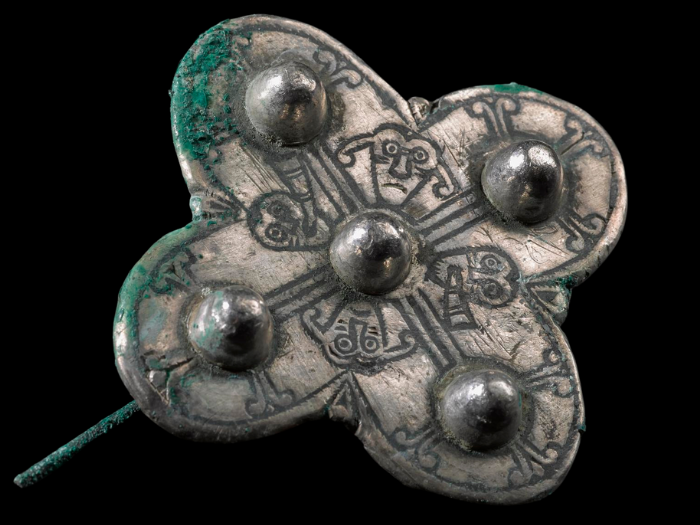
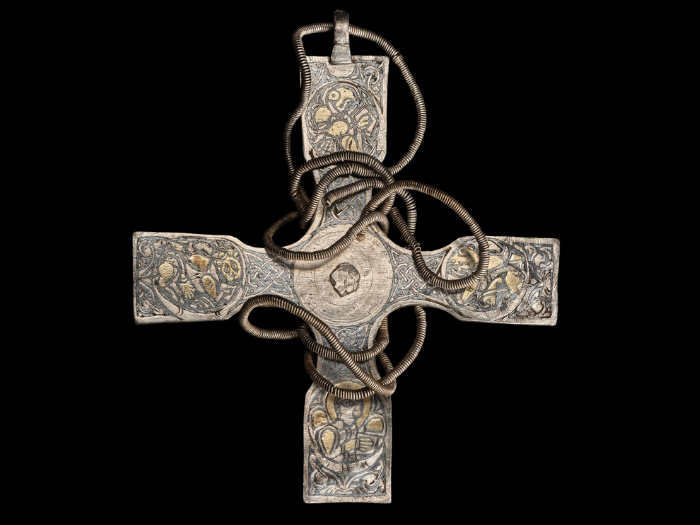
Christian objects are unusual in Viking-age hoards. We can easily imagine this cross being robbed from a Christian cleric during a raid on a church – a classic stereotype of the Viking Age. The fine spiral chain wrapped around the cross suggests that it had been recently worn, suspended from the neck.
Patient and painstaking cleaning of this cross has revealed its decoration for the first time in a thousand years. This one object poses many questions, but these can only be answered once every object in the Hoard is analysed along with investigation of the wider context.
The Old English name, 'Egbert', was carved on a hacked arm-ring recovered from the surrounding site. The fragment was small, about three centimetres in length, and in order to squeeze a full name into the available space the final letter had to be superscript, like a tiny arrow in the top right corner. Such silver arm-rings are often labelled as ‘Viking’ artefacts, but it is quite unexpected for these runic inscriptions to use Anglo-Saxon rather than Scandinavian runes.
This leads us to question simple stereotypes of a Viking hoard and the identities of the people who claimed ownership over this bullion.
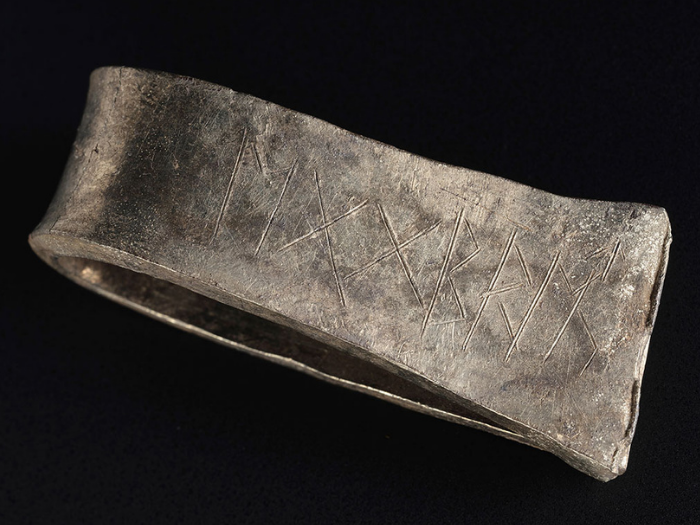
Our research into the Galloway Hoard has already revealed many layers of insights and surprises, but what more is there to investigate? Find out what the future holds for our understanding of the Galloway Hoard. Thanks to Historic Environment Scotland and the British Museum for their contributions.
Three-dimensional scans of objects in the Galloway Hoard are not just for show. Such tools can reveal subtle details, enhancing our understanding and assisting with the conservation and care of objects.
Below are seven of the Hoard's treasures, scanned and digitally reconstructed as 3D models: the silver vessel, the 'blackstone' pendant, a relic bead pendant, a gold bird pin, a disc brooch and two arm-rings. What details, hidden from sight for the last thousand years, can you find on them?
Discover more about the Galloway Hoard in this Art & Stuff podcast from Art Fund, featuring presenter Ben Miller, experts Dr Martin Goldberg and Dr Clare Downham, journalist and broadcaster Kirsty Wark, and jewellery designer Kathryn King.
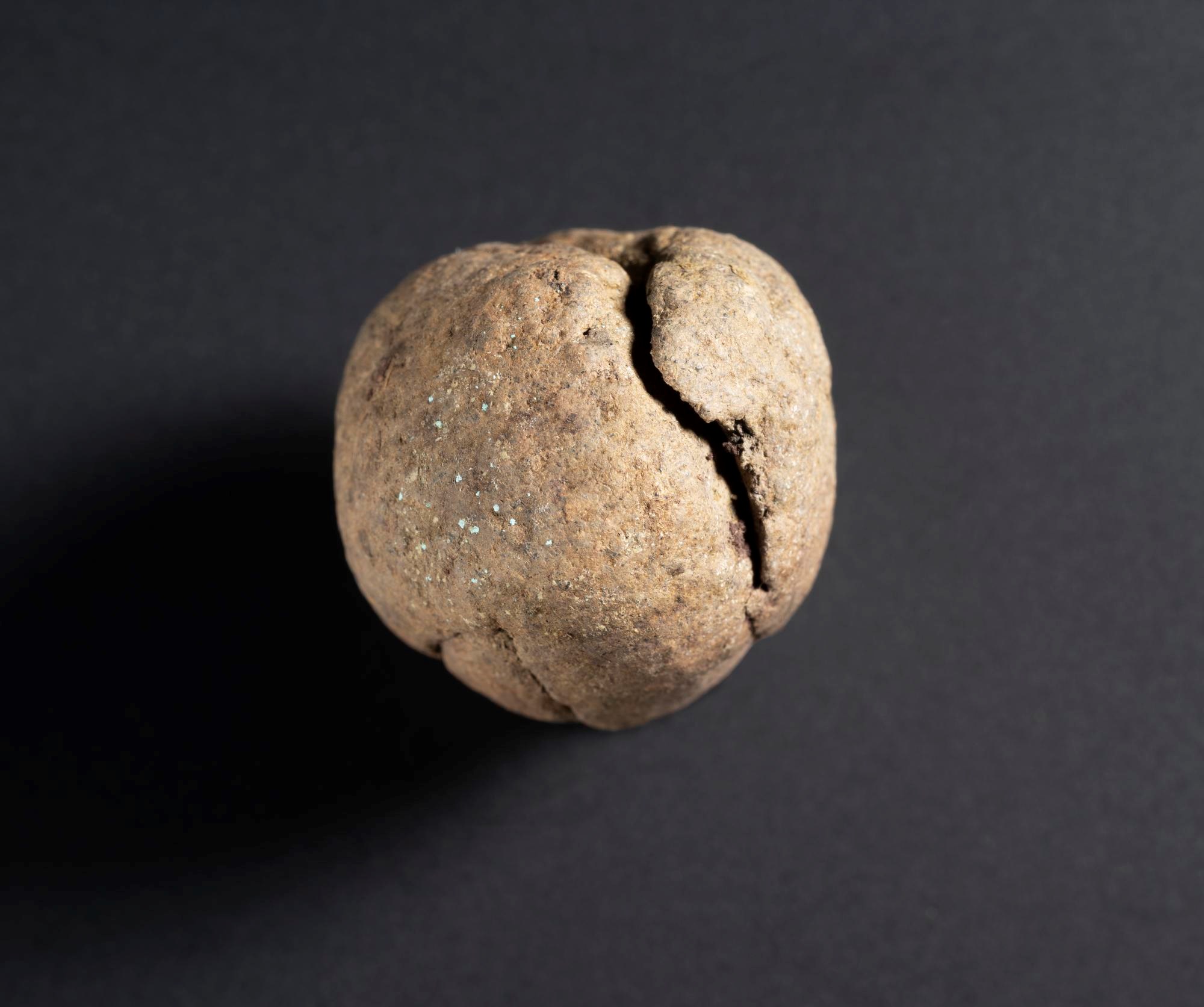
The first of two blog posts written in 2020 about the progress of research into the Galloway Hoard, with a focus on crystal and gold.
By Dr Martin Goldberg
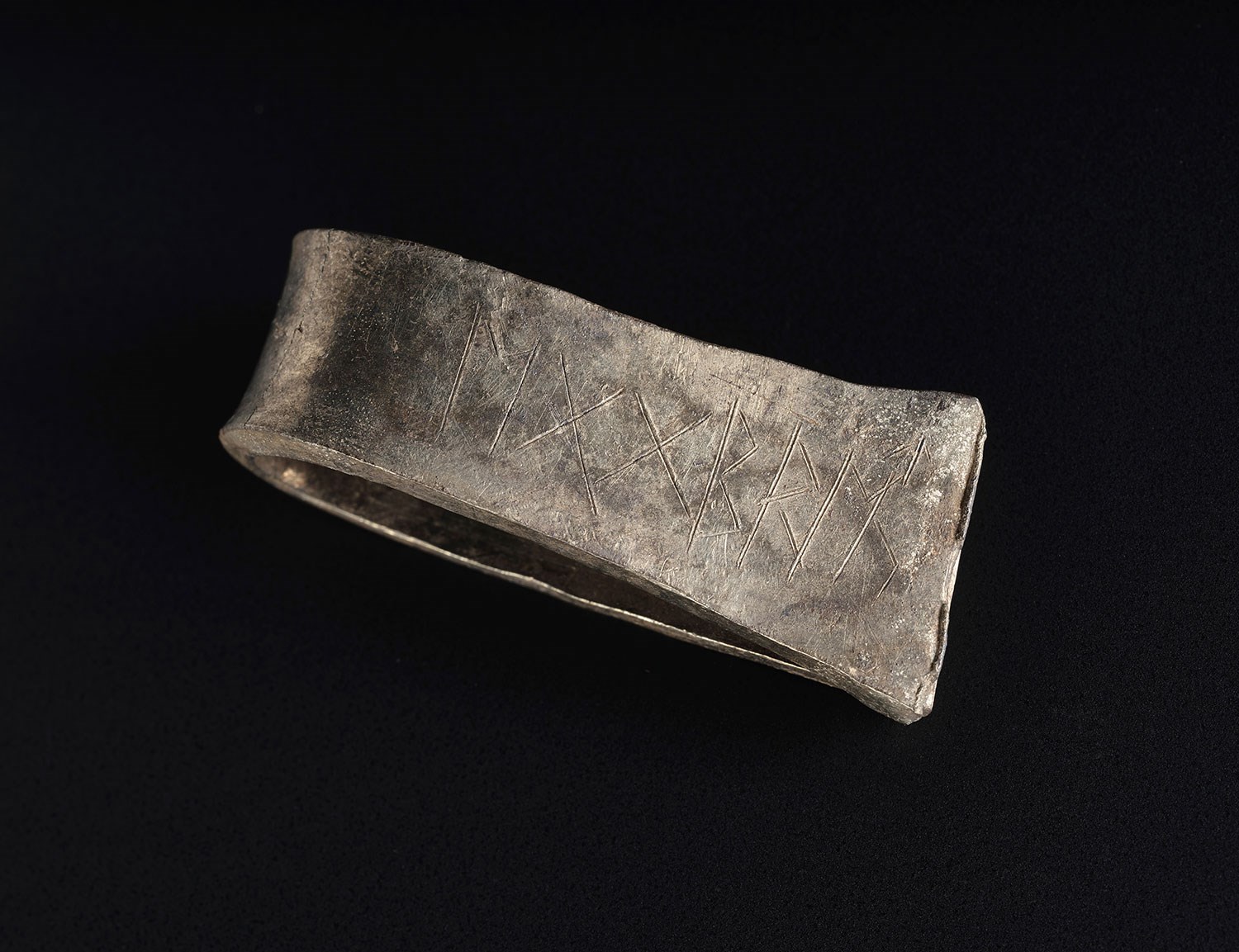
Around AD 900 an extraordinary collection of treasure was deliberately buried in the Galloway earth for safe-keeping. Who hid it? The Galloway hoard has some important clues which point us in a surprising direction.
By Dr David Parsons
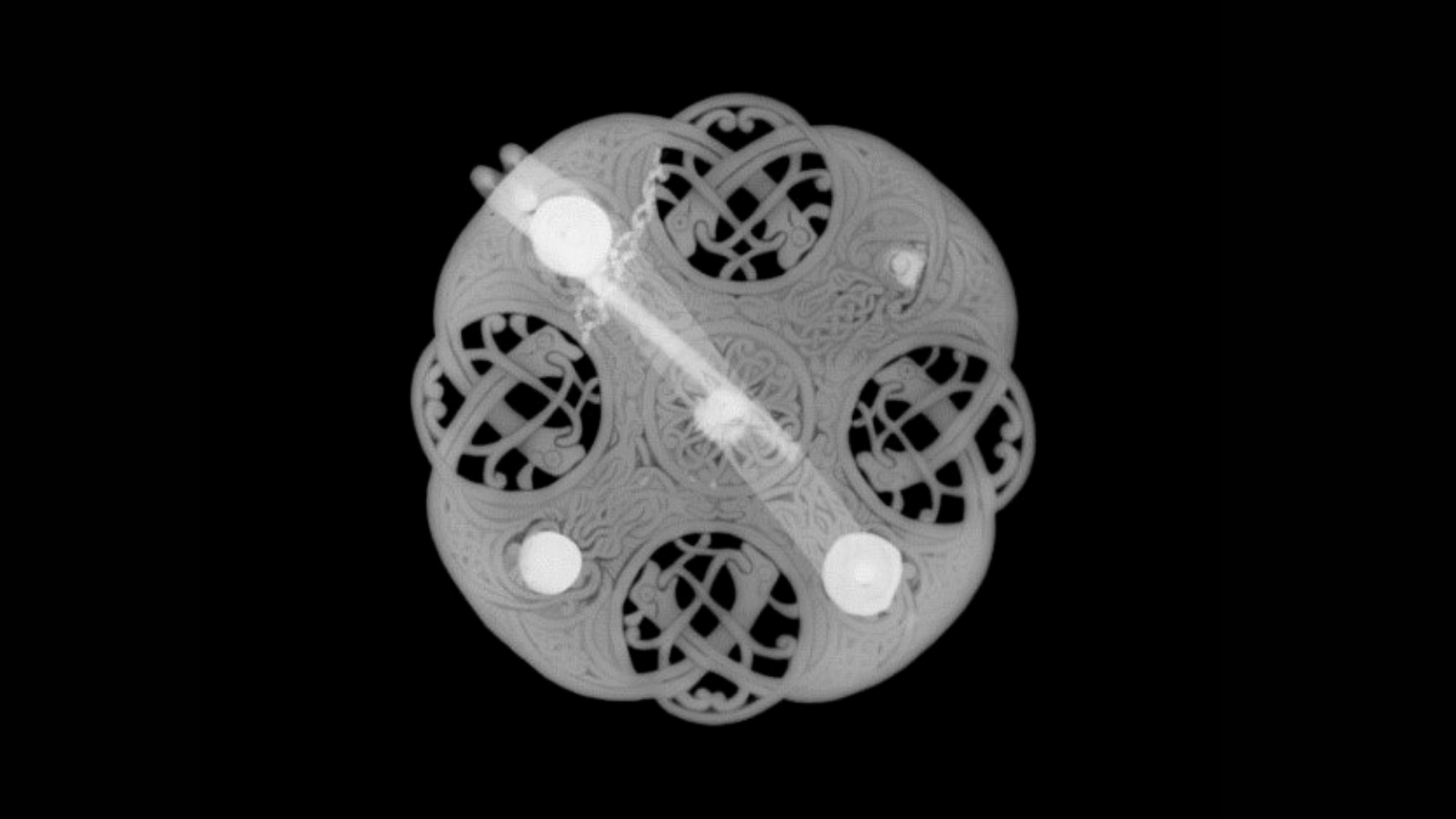
The Galloway Hoard was in the ground for nearly 1,000 years. That brings all kinds of conservation challenges. Learn what it takes to preserve Viking-Age treasures, and what the conservation process tells us about the objects and people who used and made them.
By Mary Davis
The Galloway Hoard was acquired with the support of the National Heritage Memorial Fund, the Art Fund, the Scottish Government and hundreds of generous individual supporters.
